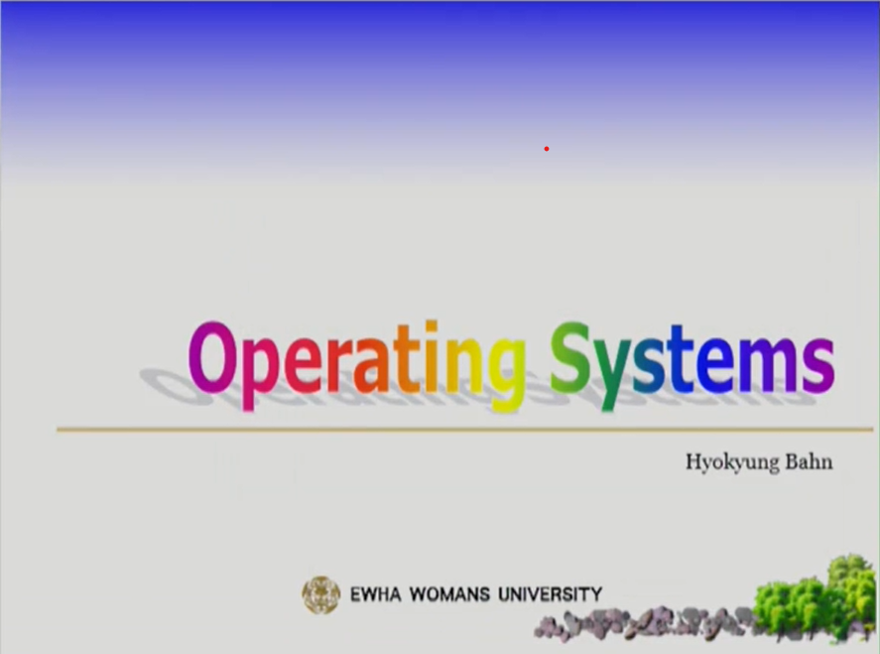운영체제 | KOCW 이화여대(반효경)
1.[OS] 강의 소개

KOCW 이화여대 반효경 교수님 강의 (2014-1)
2.[OS] Introduction to Operationg Systems

운영체제란 무엇인가, 운영체제의 목적, 운영체제의 분류, 운영체제의 예, 운영체제의 구조
3.[OS] System Structure & Program Execution 1

컴퓨터 시스템 구조, Mode bit, Timer, Device Controller, 입출력(I/O)의 수행, 동기식 입출력과 비동기식 입출력, 시스템콜(System Call), 인터럽트(Interrupt)
4.[OS] System Structure & Program Execution 2

동기식 입출력과 비동기식 입출력, 시스템콜, DMA, 서로 다른 입출력 명령어, 저장장치 계층 구조, 프로그램의 실행(메모리 load), 커널 주소 공간의 내용, 사용자 프로그램이 사용하는 함수, 프로그램의 실행
5.[OS] Process

프로세스의 개념, Process State, Process Control Block(PCB), Context Switch, 프로세스를 스케줄링하기 위한 큐, Ready Queue와 다양한 Device Queue, Scheduler
6.[OS] Thread

Thread, Single and Multithreaded Processes, Benefits of Threads, Implemetation of Threads
7.[OS] Process Management

프로세스 생성, 프로세스 종료, 프로세스와 관련한 시스템콜, 프로세스 간 협력, Message Passing, Interprocess communication
8.[OS] CPU burst와 CPU Scheduler

CPU and I/O Bursts in Program Execution, CPU-burst Time의 분포, 프로세스의 특성 분류, CPU Scheduler & Dispatcher, Scheduling Algorithms, Scheduling Criteria
9.[OS] CPU Scheduling Algorithm

FCFS, Non-Preemptive SJF, Preemptive SJF, Exponential Averaging, Priority Scheduling, Round Robin(RR), Multilevel Queue
10.[OS] Process Synchronization 소개

Process Synchronization; Race condition